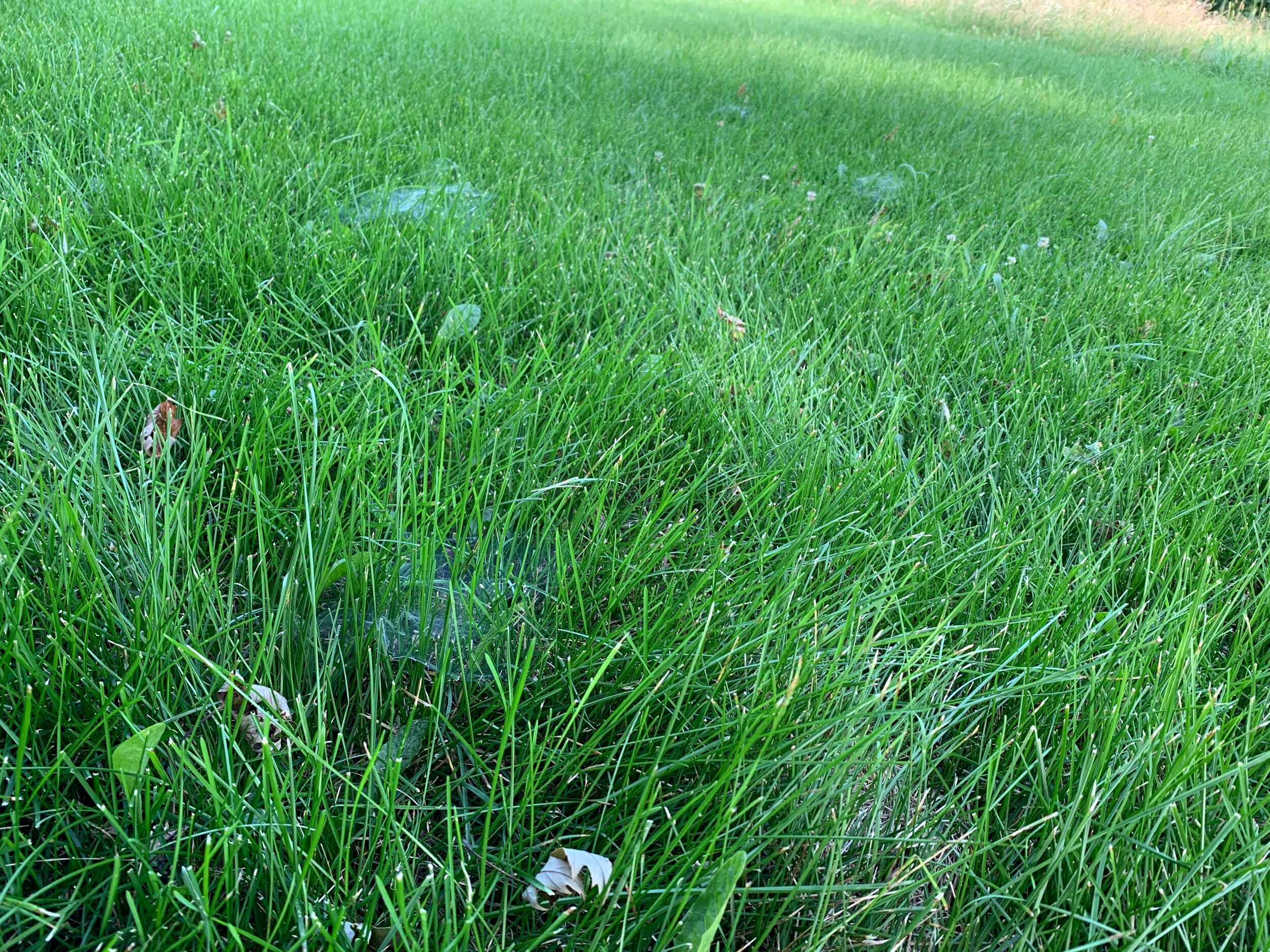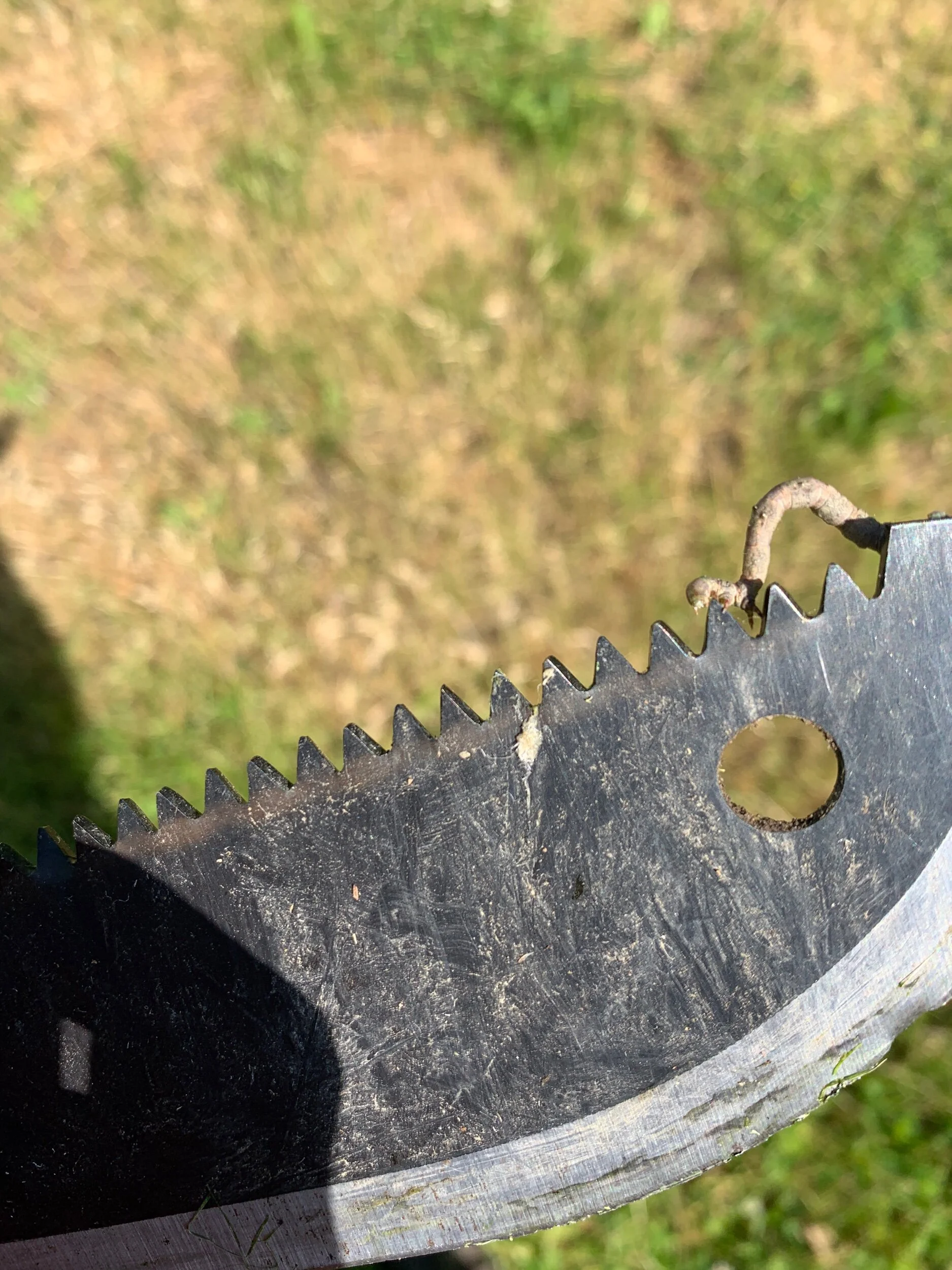So there I was, yesterday morning, having a private moment in the bathroom. Then I heard a sliding and a clacking of sharp little claws, and a quiet "thud" on the door.
A second later the mouse ran out from under the door.
Under these circumstances one has to make a decision. I was in a compromising position, of course, but the earliness of the hour virtually ensured that I was likely to be unobserved. And I had to think and act quickly. So I did what I think most would under the circumstances:
I opened the door.
The cat came skittering in through the doorway and immediately located the mouse, who (of course) immediately ran behind the decorative storage lockers we have in the bathroom.
This is a scene, the type of which plays itself over and over again across time in our old house. The building is, functionally, a web of open passageways from the perspective of a rodent looking to come in from the winter cold. What looks to you and I like a solid wall made of wood and plaster or brick looks to mousy eyes like a piece of Swiss cheese. So, as the temperature drops, in they come.
Now, our issues with these tiny furry friends has lessened over the years with the help of commercial pest control. Still, the numbers never seem to drop to an absolute zero. And while this is somewhat to the dismay of the human inhabitants of our home, the feline crew seems to prefer the non-zero situation.
The tense and tenuous relationship between cat and mouse is a story as old as time - they say that the ancient Egyptians worshipped cats in part because they kept the rodents from overwhelming their grain stores and protected them from other pests. That relationship has persisted over time, and settlers in the 18th and 19th centuries have also valued feline companionship for the purposes of vermin maintenance.
Within our own home the rodent control team consists of two players - Malcolm and Inara. Malcolm is a largish gray cat with green eyes who would seem to be a Russian Blue but for two tiny bits of white - one on his chest and the other on his tail. He has a delightful, chirping meow. He’s a beefy, strong cat. You can feel the muscle when you pick him up. A natural athelete, he is able to gain the top of our refrigerator with a leap from ground.
Inara is a tortoiseshell with yellow eyes. She is noticeably smaller and more slight than Malcolm, skittish and shy with most members of the family. She has a squeaking meow that is sometimes hard to detect and never pleasant. She is rarely seen to leap, and instead must climb our tall cat tree with claws and effort.
And so of course, who would you expect to have come skittering in to that bathroom? The Adonis, the cat-equivalent of the football player, the track god?
It was Inara.
As is so frequently the case in my experience with cats over the years, it’s the lady who does all the work. Inara parks herself at key points in the home and sits patiently and listens, waiting for the thing she hears behind the wall to peek a whisker out in the open.
Ideally, once that whisker shows, we as the cat owners (owned?) would like to be able to say that the rodent invader is dispatched quickly and efficiently. Those of you with previous cat experience will know this is absolutely not the case. Rather, from the cat’s perspective the catching of the mouse is just the first step in what is about to become an event of extended rodential torture that would make the writers at the Geneva convention add another passage to the rule book if they were to see it.
Apparently the mouse must be made to feel that it has a chance to escape, over and over again, just to discover that there, once again, is a swiping paw to block the way. Periodically one can hear the plaintive squeaks for help that indicate the trial is not yet complete. And apparently there are moments when it has become clear that the current venue is no longer the correct one - that the dining room isn’t the right place any more, and the mouse must be moved to, say, the living room. And so the cat is seen carrying the mouse in that characteristic heads-up position. At these moments the mouse is still and quiet and you think "it’s all over".
Nope - I don’t know why they remain still in that position - if it were me, I’d like to think that I’d be like John McClane surrounded by thieves in Nakatomi Plaza doing everything I could to get free. But no, they hang, still, perhaps hoping that, if they are just quiet enough, the cat will forget they are there... in the cat’s mouth.
This is clear, of course, because once they get to the living room and drop their rodent captive, he starts to move again.
Although he is clearly not in charge of the mousing situation, Malcolm does attempt to cooperate. It would be wrong to describe them as team players - it’s more like rivals working coincidentally towards the same goal. And now might be the right time to mention that we know he can jump to the top of the refrigerator because we feed him up there. We have to because, if we do not, Inara eats all of this big, beautiful athelete’s food.
So you can imagine how well his attempts to participate work most of the time.
There was an event once, several months ago, where he finally got so frustrated that he reached over, picked up the mouse, and simply ate it. If you are picturing the kid who shoves the entire ice cream cone in his mouth so his older brother cannot take it you are right on track.
Yesterday morning, during our bathroom adventure, I was able to move the locker so that Inara could access her prize and scurry with it back out of the bathroom. I’d like to say that I know what happened next, but I had to leave, and so have only the memory of feline and mouse silhouettes against the light of the front hallway to finish that event for me. Sometimes we find the mice later, deposited in delightful locations, once they have lost their interest to the cats due to the no-longer-breathingness they have attained.
Our ancestors valued their feline companions for the perceived assistance in pest control, and understandably so. I’m not certain that, in our situation they truly make much of a difference. The mouse sightings dropped precipitously once we contracted with pest management services. For a while we had a batch of cats outdoors on duty, but honestly our dogs seem to catch more vermin than the cat crew ever did (and the dogs are merciless on that score). But it’s possible that our ancestors also delighted in the joy cats do seem to take in their assigned duties. Setting aside the ultimate outcome, watching a cat diligently at work with a mouse is a little like watching Norm Abrams put together a chair on New Yankee Workshop... in an era absent television and video games a mousing cat would likely be (and indeed, is) quite entertaining.


















 But I am not going to do that - mass scale lepooridicide is off the table.
However, it’s clear that if we are going to continue to grow vegetables going forward I will probably need to put a rabbit-proof fence around our garden. This is the sort of chore that I don’t love because, while I understand how to do it intellectually, my technical skills are... lacking. No matter how hard I try the fence will almost certainly look like crap when I’m done.
But our garden looks like crap now, so...
But I am not going to do that - mass scale lepooridicide is off the table.
However, it’s clear that if we are going to continue to grow vegetables going forward I will probably need to put a rabbit-proof fence around our garden. This is the sort of chore that I don’t love because, while I understand how to do it intellectually, my technical skills are... lacking. No matter how hard I try the fence will almost certainly look like crap when I’m done.
But our garden looks like crap now, so...

























































 ...
...















